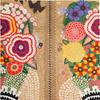FINE HUANGHUALI FURNITURE FROM AN IMPORTANT PRIVATE AMERICAN COLLECTION TO BE OFFERED AT CHRISTIE’S NEW YORK
- NEW YORK, New York
- /
- March 11, 2013
On March 21, Christie's will offer 13 pieces of Fine Huanghuali Furniture from an Important Private American Collection. Dating from the 17th and 18th centuries, each is constructed from huanghuali, also known as yellow rosewood, among the most desirable and highly sought-after wood in Chinese furniture construction. Each item is a superb example of its type and carries an impeccable provenance.
Highlighting the collection is a magnificent and very rare huanghuali square-corner tapered cabinet, fangjiaogui (estimate: $600,000-800,000). Standing nearly six feet tall, the simplicity and elegance of form of this cabinet is in the classical Ming style. The combination of design, strong proportions and superb craftsmanship lend this cabinet a refined elegance and sense of balance and stability.
A magnificent and very rare large huanghuali southern official's hat armchair, or nanguanmaoyi, is also of grand proportions and was constructed in the 17th or early 18th century (estimate: $300,000-500,000). The first known depiction of a nanguanmaoyi is from a cave painting dated 538 in Dunhuang, legendary site of Buddhist cave temples in northwestern China. From that early period in Chinese history, this style of chair has developed into one of the most popular and successful forms of furniture. The extraordinary height of the current example, in combination with the thick, sweeping rails and dramatic, strong lines, makes it a truly superb and very rare example of its type.
A very rare large huanghuali recessed-leg painting table (estimate: $500,000-700,000) is an example of one of the most well-known and immediately recognizable forms found in classical Chinese furniture construction. Tables of this elegant and restrained form, with the graceful splay of the legs, trace their origins to furniture design of the Song dynasty, and several variations of this type are known. The basic proportions were adapted to make large painting tables, smaller tables, benches and stools. This form of table is also referred to as a Character One Table due to its similarity in profile to the single horizontal stroke of the Chinese character for the number “one.” One of the most impressive features of the present table is the long, single-panel floating top. Tables using large sections of huanghuali, such as seen here, are often considered earlier examples, as the precious material became harder to acquire in subsequent years.




10270x400_c.jpg)







_-Closing-the-Distance_100x100_c.jpg)









